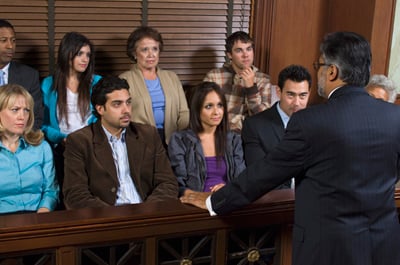Voir dire is a crucial phase in any trial. It is the process of selecting a jury, where both the prosecution and the defense counsel have the opportunity to question potential jurors, and decide whether or not they would be impartial and fair in their judgment. During this process, the lawyers are allowed to use a limited number of strikes to remove potential jurors from the jury pool. The strategic use of these voir dire strikes can make or break a case. In this article, we will discuss how to use your voir dire strikes strategically.
Understanding Voir Dire Strikes:
Before discussing how to strategically use your voir dire strikes, it is important to understand what they are. Voir dire strikes are the number of jurors that each side can remove from the jury pool without giving any reason. In most cases, these strikes are limited to a certain number. The number of strikes varies from state to state and can also depend on the type of case. For example, in a criminal case, each side may be allowed a certain number of peremptory challenges, while in a civil case, the number may be different.
Strategically Using Voir Dire Strikes:
Now that we have a basic understanding of what voir dire strikes are, let's discuss how to use them strategically. Here are a few tips to keep in mind:
1. Know Your Case:
Before entering the voir dire process, it is important to have a clear understanding of your case. This includes knowing the facts, the law, and the potential issues that may arise during trial. By knowing your case, you will be better equipped to ask potential jurors the right questions and identify those who may be biased or impartial.
2. Identify Biases:
During voir dire, one of the primary goals is to identify potential jurors who have biases that may affect their ability to be impartial. For example, if you are representing a defendant in a criminal case, you may want to remove potential jurors who have a strong bias against defendants or the type of crime your client is accused of. Similarly, if you are representing a plaintiff in a personal injury case, you may want to remove potential jurors who have a bias against personal injury claims.
3. Consider Demographics:
Another factor to consider when using voir dire strikes is demographics. In some cases, the demographics of potential jurors may be important. For example, if you are representing a defendant in a case where race may be a factor, you may want to remove potential jurors who belong to a certain race or ethnicity. Similarly, if you are representing a plaintiff in a case where gender may be a factor, you may want to remove potential jurors who belong to a certain gender.
4. Consider Jurors' Attitudes:
In addition to biases and demographics, it is also important to consider potential jurors' attitudes. For example, if you are representing a defendant in a case involving a controversial issue, you may want to remove potential jurors who have strong opinions about that issue. On the other hand, if you are representing a plaintiff in a case involving a sympathetic issue, you may want to keep potential jurors who are likely to be sympathetic to your client's case.
5. Use Your Strikes Wisely:
Finally, it is important to use your strikes wisely. Keep in mind that you only have a limited number of strikes, so it is important to use them strategically. Don't waste your strikes on potential jurors who are unlikely to be chosen for the jury. Instead, focus on removing potential jurors who are likely to be biased or impartial.
Conclusion:
The strategic use of voir dire strikes can make a significant difference in the outcome of a trial. By knowing your case, identifying biases, considering demographics and attitudes, and using your strikes wisely, you can increase your chances of selecting a fair and impartial jury. It is important to remember that voir dire is a critical phase of any trial, and the decisions made during this process can have a lasting impact on the outcome of the case.
This is part 3 of a 5-part series. Other parts are linked here: Part 1, Part 2, Part 3, Part 4 & Part 5.
Articles on A2L Consulting's site related to jury selection, mock trials, trial consulting and persuasion:
- Part 1 of this 4-part article series focused on jury selection and jury consulting
- A2L Consulting VOTED #1 jury consultant by the readers of LegalTimes
- [Complimentary 174-page e-book for litigators]: Jury Consulting Guidebook & Tips for Litigators
- Jury Selection: Don't Ask Ask, Don't Know
- Is Hiring a Jury Consultant Really Worth It?
- Learn More About Our Jury Consulting Services
- 10 Ways to Spot Your Jury Foreman
- A2L Named Top Demonstrative Evidence Firm In US






Leave a Comment